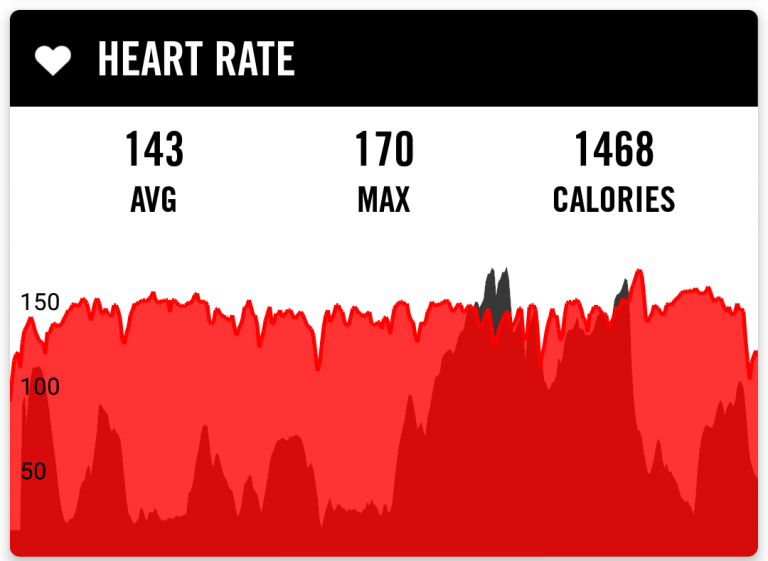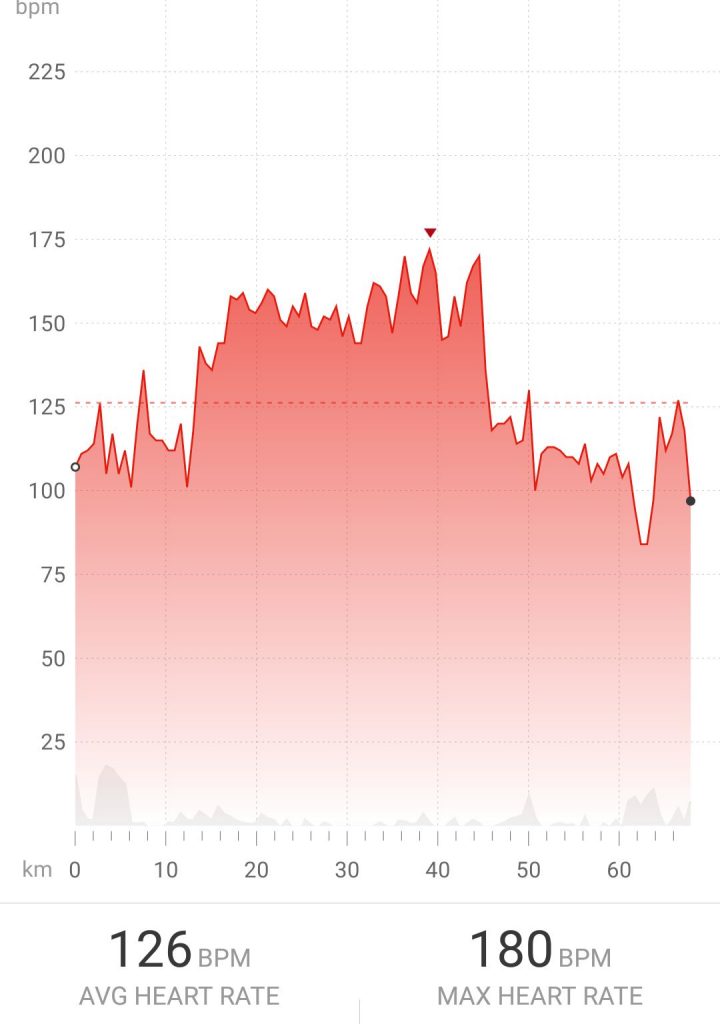As a coach of trail runners, I use my athletes’ heart rates a lot. Without it, it can be hard to monitor how hard a trail run is, especially compared to road running, where you can compare intensity and pace easily.
Trail running is more difficult to monitor by pace. It depends on weather, mud, technicality of the terrain, elevation gain or loss and the runner’s skills to cope with the trail conditions. This is also what makes trail running so much more than just running.
Where to start with heart rate training?
First, get to know your resting heart rate and your maximum heart rate.


Find your resting heart rate
Finding your resting heart rate is simple. Before you go to sleep you take your heart rate monitor and put it next to your bed. When you wake up – you put on your belt and relax for 3-5 minutes – and the lowest heart rate is your resting heart rate.
The only complication is that the resting heart rate is also is an indicator for your body state. Stress, illness, and hard training the day before will raise your resting heart rate.
That means that the resting heart rate is varying throughout the week. So it can be a good idea to take your resting heart rate 5 days in a row and find the lowest value.
Find your maximum heart rate
Finding your maximum heart rate is much more of a challenge – you really need to push yourself!
Please note, if you haven´t pushed yourself for a while, please be careful. You may want to consult a doctor before you do this if you have any health concern. It is not advisable to do the max test without training first. After a 7-8 weeks of training you can consider doing a max test!
Here is how it is done. You should be really well rested before doing this.
- Do a good warm up – 15-20 minutes.
- Next run for 2 minutes really fast. For the last 30 seconds of this (1:30-2:00) you push even harder
- Walk/jog for 1 minute.
- Run even faster for 2 minutes. For the last 30 seconds of this (1:30-2:00) you push it to the absolute max.
- You walk for 1 minute and prepare mentally to push it to the max
- 2 minutes running as hard as you can – more max! Focus hard on the last minute. You push as hard as you can imagine and then a little more! Push, Push and PUSH!
Your peak at this training is very close to your maximum heart rate.
If you don’t feel like pushing it to your limit – the rule of thumb is that you can find your max heart rate from your age.
220 – your age = max. heart rate
For example, if you are 40,your max. heart rate is 180, but this is not very accurate.


How do I use my max heart rate and my resting heart rate to train?
That is very difficult to do explain briefly, but I will try.
It is very important that you vary your training. Studies shows you get the best results by polarizing your training. This means either you train hard, or you train easy.
80 percent easy and 20 percent hard!
Divide your training into zones. The number of zones depends on your coach or your own choice. I use 4 zones so in this article I will explain this system using Karvonens Formula to find your training zones.
Karvonens formula
(your maximum heart rate – your rest heart rate) x intensity in percent + your resting pulse = your exercise pulse
Example: A 42 year old male with a max. heart rate at 191 and a resting heart rate at 54 wants to train with 70-80 % of his performance capability.
Calculation:
(191-54)x0.70+54 =150
(191-54)x0.80+54= 164
This means his heart rate should be between 150-164 bpm (Beats per Minute).
OK – and now for the zones!
Zone 1. 55-70 % Easy training.
Where you actually should spend a lot of your time training.
Very nice and comfortable running – where you feel you can run forever – maybe you reach this zone just by walking – and that is ok! Then you walk. You can have a conversation with your running mates in this zone.
Zone 2. 70-80 % Moderate intensity.
Your natural speed – but actually not a zone that makes you much better!
You train your endurance and still feel pretty comfortable – especially in the lower end of the zone. Your conversation is not so easy at this speed, but not impossible!
Zone 3: 80-90 % high intensity
You’re are training your heart at this speed – it feels hard and conversations are brief at this speed!
Typical you can hold this intensity for 15-45 minutes depending on your training level.
Zone 4: Brutal training.
No conversation at all!
You can hold this intensity for some minutes – but it is good for oxygen uptake and you are pushing your fitness level.
My brief advice
You can read for hours and even days about heart rate training on the internet, but here is my super brief advice:
- Run 70 percent of your training in zone 1
- Run 10 percent of your training in zone 2
- Run 20 percent mixed between zone 3 and the brutal zone 4
And what if you do not have a heart rate monitor… just use my rule of thumb: go easy on the flats and then speed up and run like hell every time you hit a downhill!
If you have any specific topics you would like Simon to cover in the next Trail Running News, please get in touch with us via info@vietnammountainmarathon.com or via the VMM, VTM or VJM Facebook pages.
You can follow Simon on Instagram at simon.grimstrup and on Facebook at Danishmountainrunner




